 W
WMountaineering, or alpinism, is the set of activities that involves ascending mountains. Mountaineering-related activities include traditional outdoor climbing, skiing, and traversing via ferratas. Indoor climbing, sport climbing and bouldering are also considered mountaineering by some.
 W
WAlpine club huts or simply club huts (Clubhütten) form the majority of the over 1,300 mountain huts in the Alps and are maintained by branches, or sections, of the various Alpine clubs. Although the usual English translation of Hütte is "hut", most of them are substantial buildings designed to accommodate and feed significant numbers of hikers and climbers and to withstand harsh high alpine conditions for decades.
 W
WAlpine Club maps are specially detailed maps for summer and winter mountain climbers. They are predominantly published at a scale of 1:25.000, although some individual sheets have scales of 1:50.000 and 1:100.000.
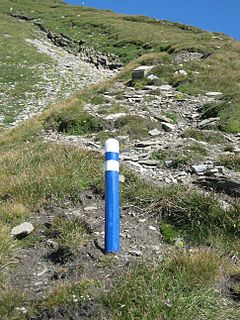 W
WAn alpine route is a trail or climbing route through difficult terrain in high mountains such as the Alps, sometimes with no obvious path. In the Alps, the Alpine clubs define and mark an Alpine Route, also called Alpinweg or Alpinwanderweg.
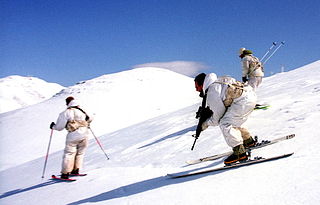 W
WThe Alpinist Unit Hebrew: יחידת האלפיניסטים, Yehidat Ha'Alpinistim) is a special Israeli Defence Force infantry reserve unit, under the command of the Israeli Northern Command, specializing in mountain warfare, snow warfare and difficult terrain warfare in the northern front, especially Mt. Hermon.
 W
WAn arête is a narrow ridge of rock which separates two valleys. It is typically formed when two glaciers erode parallel U-shaped valleys. Arêtes can also form when two glacial cirques erode headwards towards one another, although frequently this results in a saddle-shaped pass, called a col. The edge is then sharpened by freeze-thaw weathering, and the slope on either side of the arête steepened through mass wasting events and the erosion of exposed, unstable rock. The word ‘arête’ is actually French for edge or ridge; similar features in the Alps are often described with the German equivalent term Grat.
 W
WAn avalanche cord is an old form of locating device designed to enable people who have been buried by an avalanche to be rapidly located and rescued.
 W
WA bergschrund or rimaye is a crevasse that forms where moving glacier ice separates from the stagnant ice or firn above. It is often a serious obstacle for mountaineers, who sometimes abbreviate "bergschrund" to "schrund".
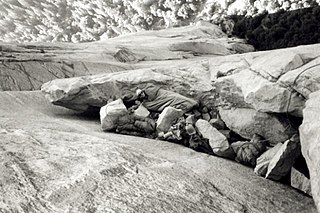 W
WA bivouac shelter is any of a variety of improvised camp site, or shelter that is usually of a temporary nature, used especially by soldiers, or persons engaged in backpacking, bikepacking, scouting, or mountain climbing. It may often refer to sleeping in the open with a bivouac sack, but it may also refer to a shelter constructed of natural materials like a structure of branches to form a frame, which is then covered with leaves, ferns, and similar material for waterproofing and duff for insulation. Modern bivouacs often involve the use of one or two man tents but may also be without tents or full cover. In modern mountaineering the nature of the bivouac shelter will depend on the level of preparedness; in particular whether existing camping and outdoor gear may be incorporated into the shelter. A bivouac shelter is colloquially known as a bivvy.
 W
WFrederick Harrison Burlingham was an American journalist, explorer, cinematographer, and producer of numerous travelogues in the silent era. His most notable works are his films depicting Alpine landscapes and his mountain-climbing expeditions in Europe between 1913 and 1918, his explorations of Borneo in 1920, and his excursions to various sites in the United States and Canada in the early 1920s. He was also an accomplished still photographer and book author, publishing in 1914 How to Become an Alpinist, which is illustrated with his photographs. Burlingham initially produced films while working in London for the British and Colonial Kinematograph Company, but he later developed his films independently and released them under contract with licensed distributors.
 W
WA crevasse is a deep crack, or fracture, found in an ice sheet or glacier, as opposed to a crevice that forms in rock. Crevasses form as a result of the movement and resulting stress associated with the shear stress generated when two semi-rigid pieces above a plastic substrate have different rates of movement. The resulting intensity of the shear stress causes a breakage along the faces.
 W
WA crux in climbing, mountaineering and high mountain touring is the most difficult section of a route, or the place where the greatest danger exists. In sport climbing and bouldering the most challenging point is also called the crux. In describing a climbing route using a topo, cruces are usually shown with a key symbol.
 W
WIn mountaineering, the death zone refers to altitudes above a certain point where the pressure of oxygen is insufficient to sustain human life for an extended time span. This point is generally tagged as 8,000 m. The concept was first conceived in 1953 by Edouard Wyss-Dunant, a Swiss doctor, who called it the lethal zone. All 14 peaks above 8000m in the death zones are located in the Himalaya and Karakoram of Asia.
 W
WThe International Mountaineering and Climbing Federation or UIAA recognises eight-thousanders as the 14 mountains that are more than 8,000 metres (26,247 ft) in height above sea level, and are considered to be sufficiently independent from neighbouring peaks. However, there is no precise definition of the criteria used to assess independence, and, since 2012, the UIAA has been involved in a process to consider whether the list should be expanded to 20 mountains. All eight-thousanders are located in the Himalayan and Karakoram mountain ranges in Asia, and their summits are in the death zone.
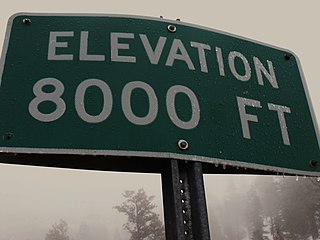 W
WThe elevation of a geographic location is its height above or below a fixed reference point, most commonly a reference geoid, a mathematical model of the Earth's sea level as an equipotential gravitational surface . The term elevation is mainly used when referring to points on the Earth's surface, while altitude or geopotential height is used for points above the surface, such as an aircraft in flight or a spacecraft in orbit, and depth is used for points below the surface.
 W
WExpedition style refers to mountaineering which involves setting up a fixed line of stocked camps on the mountain which can be accessed at one's leisure, as opposed to Alpine style where one carries all of one's food, shelter, equipment etc. as one climbs. Expedition style also incorporates the use of fixed ropes, and climbers will travel up and down the route several times to fix ropes and set up camps, while Alpine style eschews fixed ropes, porters, and camps, and climbers usually only climb the route once in a continuous push. Expedition style was the type of climbing Sir Edmund Hillary and Tenzing Norgay used in the first summitting of Mount Everest.
 W
WFirn is partially compacted névé, a type of snow that has been left over from past seasons and has been recrystallized into a substance denser than névé. It is ice that is at an intermediate stage between snow and glacial ice. Firn has the appearance of wet sugar, but has a hardness that makes it extremely resistant to shovelling. Its density generally ranges from 0.4 g/cm³ to 0.83 g/cm³, and it can often be found underneath the snow that accumulates at the head of a glacier.
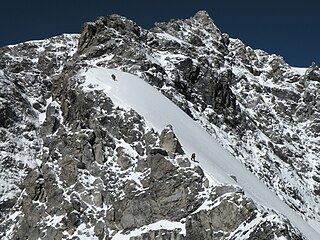 W
WA high mountain tour is a mountain tour that takes place in the zone that is covered by ice all year round, the nival zone. High mountain tours require special preparation and equipment.
 W
WAn icefall is a portion of certain glaciers characterized by relatively rapid flow and chaotic crevassed surface, caused in part by gravity. The term icefall is formed by analogy with the word waterfall, which is a similar phenomenon of the liquid phase but at a more spectacular speed. When ice movement of a glacier is faster than elsewhere, because the glacier bed steepens or narrows, and the flow cannot be accommodated by plastic deformation, the ice fractures, forming crevasses. Where two fractures meet, seracs can be formed. When the movement of the ice slows down, the crevasses can coalesce, resulting in the surface of the glacier becoming smoother.
 W
WMount Everest guides are people who help people to climb Mount Everest in the Himalayas.
 W
WMawj Aldarraji is an Iraqi mountaineer and an architect. She is widely regarded as the first female mountaineer from Iraq. Currently working through the seven summits challenge, she appears frequently in Arab media as a discussant of female empowerment and women's rights.
 W
WA moraine is any accumulation of unconsolidated debris, sometimes referred to as glacial till, that occurs in both currently and formerly glaciated regions, and that has been previously carried along by a glacier or ice sheet. It may consist of partly rounded particles ranging in size from boulders down to gravel and sand, in a groundmass of finely-divided clayey material sometimes called glacial flour. Lateral moraines are those formed at the side of the ice flow, and terminal moraines were formed at the foot, marking the maximum advance of the glacier. Other types of moraine include ground moraines and medial moraines.
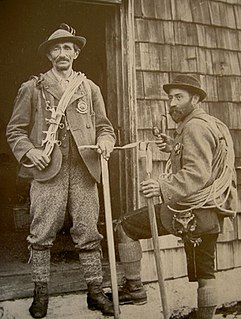 W
WA mountain guide is a specially trained and experienced professional mountaineer who is certified by local authorities or mountain guide associations. They are considered to be high-level experts in mountaineering, and are hired to instruct or lead individuals or small groups who require this advanced expertise. This professional class of guides arose in the middle of the 19th century when Alpine climbing became recognized as a sport.
 W
WA mountain hut is a building located high in the mountains, generally accessible only by foot, intended to provide food and shelter to mountaineers, climbers and hikers. Mountain huts are usually operated by an Alpine Club or some organization dedicated to hiking or mountain recreation. They are known by many names, including alpine hut, mountain shelter, mountain refuge, mountain lodge, and mountain hostel.
 W
WA mountain sport or Alpine sport is one of several types of sport that take place in hilly or mountainous terrain.
 W
WMountain Wilderness is an international non-governmental organization dedicated to the preservation of mountain areas, in their natural and cultural aspects. The organization was founded in Europe and has a stronger presence in alpine and pyrenean regions. It has, however, a worldwide reach, with representatives and actions on all continents.
 W
WMost of the peaks on Mount Kenya have been summited. The majority of these involve rock climbing as the easiest route, although some only require a scramble or a walk. The highest peak that can be ascended without climbing is Point Lenana, 4,985 metres (16,355 ft). The majority of the 15,000 visitors to the national park each year climb this peak. In contrast, approximately 200 people summit Nelion and 50 summit Batian, the two highest peaks.
 W
WA porter, also called a bearer, is a person who carries objects or cargo for others. The range of services conducted by porters is extensive, from shuttling luggage aboard a train to bearing heavy burdens at altitude in inclement weather on multi-month mountaineering expeditions. They can carry items on their backs (backpack) or on their heads. The word "porter" derives from the Latin portare.
 W
WAlthough the term "alpinism" has become synonymous with sporting achievement, pyreneism, appearing in the 19th century, distanced itself from it by considering the physical experience of the mountains as inseparable from the aesthetic and cultural emotion.
 W
WA randkluft or rimaye is the headwall gap between a glacier or snowfield and the adjacent rock face at the back of the cirque or, more loosely, between the rock face and the side of the glacier.
 W
WSchrofen, a German mountaineering term, is steep terrain, strewn with rocks and rock outcrops, that is laborious to cross, but whose rock ledges (schrofen) offer many good steps and hand holds. It is usually rocky terrain on which grass has established itself, but it can also refer to purely rocky slopes. Schrofen are found especially where the rock has broken off against its angle of dip.
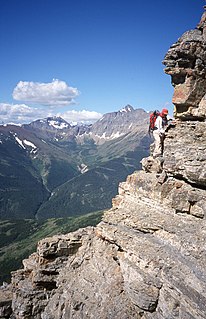 W
WScrambling is "a walk up steep terrain involving the use of one's hands". It is an ambiguous term that lies somewhere between hiking, hillwalking, mountaineering, and rock climbing. Canyoning often involves scrambling.
 W
WSignore delle cime is a popular Italian song of prayer. It was written by Bepi De Marzi in 1958, when he was 23 years old: he dedicated the song to his friend Bepi Bertagnoli who died in 1951 while climbing Mount Gramolon in the upper Valle del Chiampo.
 W
WSki mountaineering is a skiing discipline that involves climbing mountains either on skis or carrying them, depending on the steepness of the ascent, and then descending on skis. There are two major categories of equipment used, free-heel Telemark skis and skis based on Alpine skis, where the heel is free for ascents, but is fixed during descent. The discipline may be practiced recreationally or as a competitive sport.
 W
WSkyrunning is a sport of mountain running above 2,000 metres (6,600 ft) where the incline exceeds 30% and the climbing difficulty does not exceed II grade. The governing body is the International Skyrunning Federation. The sport comprises a number of different disciplines from the short, steep Vertical Kilometer to the more popular SkyRace and SkyMarathon. Ultra SkyMarathons are becoming increasingly popular as are short vertical SkySpeed races which include skyscraper racing.
 W
WA snow cornice or simply cornice is an overhanging edge of snow on a ridge or the crest of a mountain and along the sides of gullies.
 W
WA steig is a German term meaning "steep path" that originally referred to a narrow footpath over hills or mountains that could not be negotiated by horse-drawn vehicles. Today the term occurs in German-speaking countries as a synonym for all kinds of footpaths, e.g., Bürgersteig, a term for "pavement" in Austria or Switzerland. The term steig and its dialectical variations is commonly found in many placenames.
 W
WA summit cross is a cross on the summit of a mountain or hill that marks the top. Often there will be a summit register (Gipfelbuch) at the cross, either in a container or at least a weatherproof case.
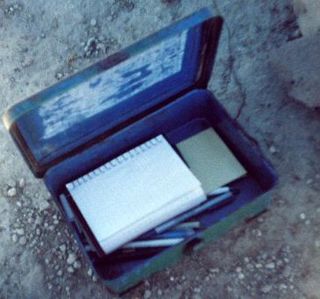 W
WA summit book or summit register is a record of visitors to the summit of a mountain. It is usually enclosed in a weatherproof, animalproof metal canister. Some books are maintained in an informal manner by an individual or small group, while others are maintained by a club. Well known and often climbed peaks, such as those on peak bagging lists, are more likely to have summit books. On the other hand, mountains which are very heavily climbed or have popular trails up, such as Mount Whitney or Ben Nevis, may not have registers, or may have a daily log book that is changed out often.
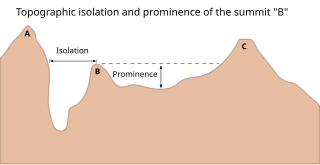 W
WThe topographic isolation of a summit is the minimum distance to a point of equal elevation, representing a radius of dominance in which the peak is the highest point. It can be calculated for small hills and islands as well as for major mountain peaks, and can even be calculated for submarine summits.
 W
WIn topography, prominence measures the height of a mountain or hill's summit relative to the lowest contour line encircling it but containing no higher summit within it. It is a measure of the independence of a summit. A peak's key col is a unique point on this contour line and the parent peak is some higher mountain, selected according to various criteria.
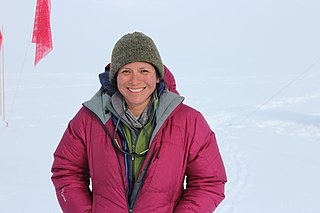 W
WSilvia Vasquez-Lavado is a Peruvian-American explorer, mountaineer, social entrepreneur and technologist. In June 2018, she became the first openly gay woman to complete the Seven Summits, the tallest mountain on each continent from both the Messner and Bass lists.
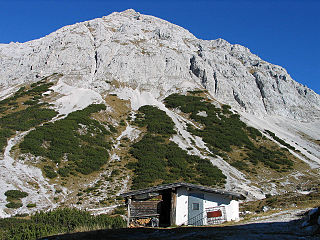 W
WA winter room is found in mountain huts used by tourists that are not managed in the winter. The winter room, unlike the rest of the hut, is easily accessible and usually is either not locked or is accessible with an Alpine Club key.